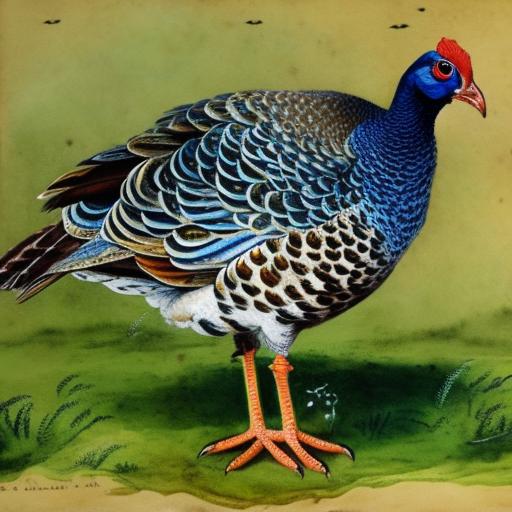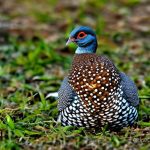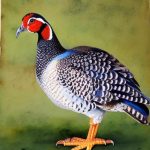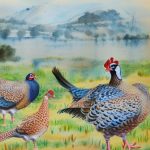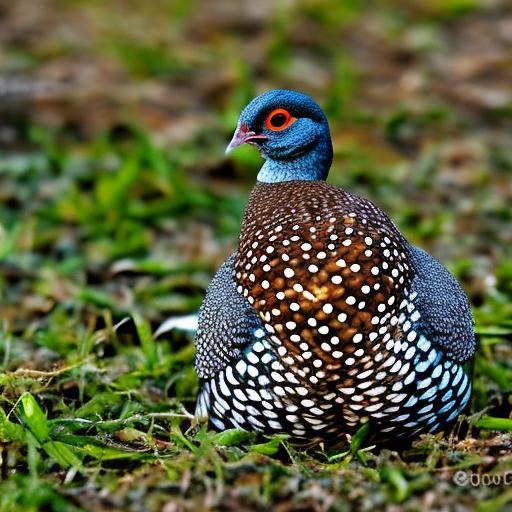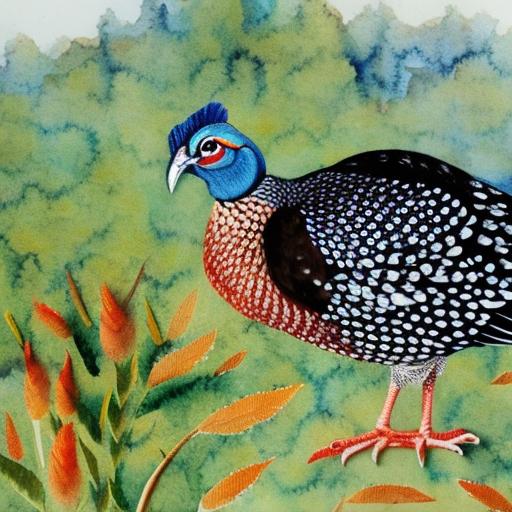Guinea fowl are fascinating and unique birds that have been domesticated for centuries. They are known for their distinctive calls, colorful plumage, and excellent foraging abilities. The American Poultry Association (APA) recognizes several breeds of guinea fowl, each with its own distinct characteristics and traits. These breeds have been carefully developed and standardized to meet specific breed standards set by the APThis recognition ensures that breeders and enthusiasts have a clear understanding of the characteristics and qualities of each breed, making it easier to select the right birds for their needs.
Guinea fowl are popular for their pest control abilities, as they are excellent at controlling insect populations in gardens and on farms. They are also valued for their flavorful meat and nutritious eggs. Additionally, guinea fowl are known for their alert and watchful nature, making them excellent guard animals for poultry flocks. With their unique personalities and striking appearance, guinea fowl have become increasingly popular among poultry enthusiasts. Understanding the characteristics, breeding, care, and uses of APA recognized breeds of guinea fowl is essential for anyone interested in raising these birds.
Key Takeaways
- APA recognizes several breeds of guinea fowl, each with its own unique characteristics and traits
- Characteristics of APA recognized breeds include different color patterns, feather types, and sizes
- Popular APA recognized breeds include the Helmeted Guinea Fowl, White Guinea Fowl, and Lavender Guinea Fowl
- Breeding and raising APA recognized breeds requires proper housing, nutrition, and predator protection
- Health and care of APA recognized breeds involves regular check-ups, vaccinations, and parasite control
Characteristics of APA Recognized Breeds
Each APA recognized breed of guinea fowl has its own distinct characteristics that set it apart from other breeds. The breeds recognized by the APA include the Pearl, Lavender, Royal Purple, White, and Buff Dundotte. The Pearl guinea fowl is perhaps the most well-known and recognizable breed, with its distinctive pearl-gray plumage covered in white spots. The Lavender guinea fowl, on the other hand, has a unique lavender-colored plumage that sets it apart from other breeds. The Royal Purple guinea fowl is known for its deep purple plumage, while the White guinea fowl has a striking all-white appearance. The Buff Dundotte guinea fowl has a beautiful buff-colored plumage with white spots.
In addition to their plumage, each breed also has specific traits related to temperament, foraging abilities, and egg production. For example, the Pearl guinea fowl is known for its excellent foraging abilities and alert nature, making it a popular choice for pest control. The Lavender guinea fowl is prized for its calm and friendly temperament, making it a great choice for backyard flocks. The Royal Purple guinea fowl is known for its high egg production, making it a popular choice for those interested in raising guinea fowl for eggs. Understanding these characteristics is essential for breeders and enthusiasts looking to select the right breed for their specific needs.
Popular APA Recognized Breeds
Among the APA recognized breeds of guinea fowl, the Pearl and Lavender breeds are perhaps the most popular among breeders and enthusiasts. The Pearl guinea fowl is known for its striking appearance, with its pearl-gray plumage covered in white spots. This breed is highly valued for its excellent foraging abilities and alert nature, making it an ideal choice for pest control on farms and in gardens. The Pearl guinea fowl is also known for its hardiness and adaptability, making it well-suited to a variety of climates and environments.
The Lavender guinea fowl is another popular choice among breeders and enthusiasts. This breed is prized for its unique lavender-colored plumage, which sets it apart from other breeds of guinea fowl. In addition to its striking appearance, the Lavender guinea fowl is known for its calm and friendly temperament, making it a great choice for backyard flocks. This breed is also valued for its excellent foraging abilities and adaptability to different environments. With their unique characteristics and striking appearance, both the Pearl and Lavender breeds of guinea fowl have become increasingly popular among poultry enthusiasts.
Breeding and Raising APA Recognized Breeds
Breeding and raising APA recognized breeds of guinea fowl requires careful attention to their specific characteristics and needs. When breeding guinea fowl, it is important to select birds that meet the breed standards set by the APA in order to maintain the integrity of the breed. This involves selecting birds with the desired plumage color, pattern, and other physical traits that are characteristic of the breed. Additionally, breeders should pay attention to temperament, foraging abilities, and egg production when selecting breeding stock.
Raising APA recognized breeds of guinea fowl requires providing them with a suitable environment that meets their specific needs. Guinea fowl are highly adaptable birds that can thrive in a variety of environments, but they do require adequate shelter, protection from predators, and access to fresh water and nutritious feed. Additionally, providing ample space for foraging is essential to ensure that guinea fowl can exhibit their natural behaviors and maintain good health. Understanding the specific needs of each breed is essential for successfully breeding and raising APA recognized breeds of guinea fowl.
Health and Care of APA Recognized Breeds
Maintaining the health and well-being of APA recognized breeds of guinea fowl requires regular care and attention to their specific needs. Like all poultry, guinea fowl are susceptible to certain diseases and parasites that can impact their health and productivity. Providing a clean and dry living environment, regular health checks, and access to nutritious feed are essential for preventing common health issues in guinea fowl. Additionally, vaccination against common poultry diseases can help protect guinea fowl from illness.
In addition to regular health care, providing proper nutrition is essential for maintaining the health of APA recognized breeds of guinea fowl. Guinea fowl require a balanced diet that includes a high-quality poultry feed supplemented with fresh greens, insects, and grit for digestion. Providing access to fresh water at all times is also essential for keeping guinea fowl healthy and hydrated. Understanding the specific health needs of each breed is essential for providing proper care and ensuring the well-being of APA recognized breeds of guinea fowl.
Uses and Benefits of APA Recognized Breeds
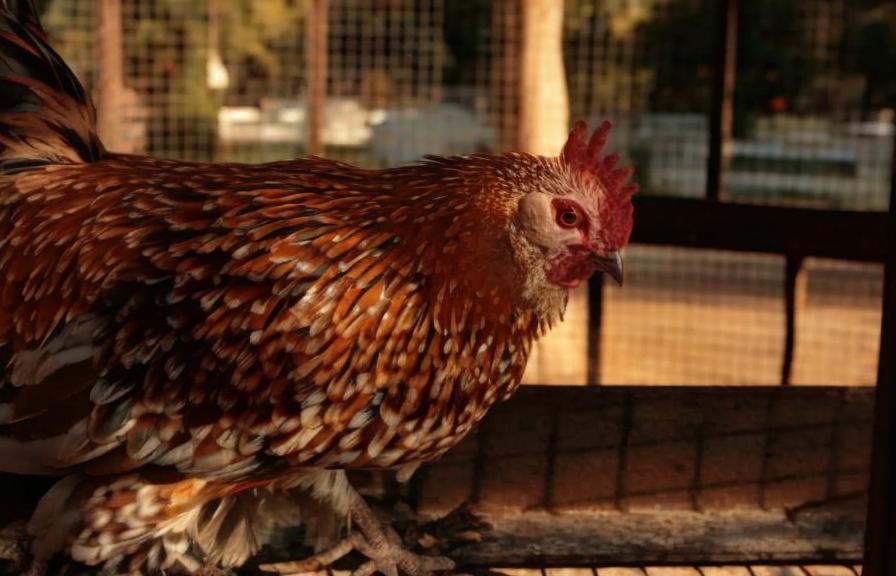
APA recognized breeds of guinea fowl are valued for their diverse uses and benefits in agriculture and homesteading. One of the primary uses of guinea fowl is pest control, as they are highly effective at controlling insect populations in gardens and on farms. Their voracious appetite for insects makes them valuable allies in organic pest management, reducing the need for chemical pesticides. Additionally, guinea fowl are valued for their flavorful meat, which is lean and rich in nutrients. Their eggs are also prized for their rich flavor and nutritional value.
In addition to their practical uses, guinea fowl are valued for their unique personalities and striking appearance. Their distinctive calls and alert nature make them excellent guard animals for poultry flocks, alerting owners to potential threats from predators. Guinea fowl are also known for their adaptability to a variety of climates and environments, making them well-suited to small-scale farming and homesteading operations. With their diverse uses and benefits, APA recognized breeds of guinea fowl have become increasingly popular among farmers, homesteaders, and poultry enthusiasts.
Conclusion and Considerations for Choosing an APA Recognized Breed
In conclusion, APA recognized breeds of guinea fowl offer a wide range of characteristics, uses, and benefits that make them valuable additions to farms and homesteads. Understanding the specific traits and needs of each breed is essential for selecting the right birds for pest control, meat production, egg production, or as guard animals. Breeders and enthusiasts should carefully consider the unique characteristics of each breed when choosing birds for breeding or raising purposes.
When selecting an APA recognized breed of guinea fowl, it is important to consider factors such as plumage color, temperament, foraging abilities, egg production, and adaptability to different environments. Additionally, providing proper care and attention to the specific health needs of each breed is essential for maintaining the well-being of guinea fowl. With their diverse uses and benefits, APA recognized breeds of guinea fowl have become increasingly popular among farmers, homesteaders, and poultry enthusiasts looking to add these unique birds to their operations.
If you’re interested in learning more about APA recognized breeds of guinea fowl, you might also want to check out this informative article on how to insulate a chicken coop. Proper insulation is crucial for maintaining the health and well-being of your poultry, including guinea fowl. This article provides valuable insights and tips on creating a comfortable and safe environment for your birds. You can read the full article here.
FAQs
What are APA recognized breeds of guinea fowl?
The American Poultry Association (APA) recognizes four breeds of guinea fowl: the Pearl, Lavender, White, and Royal Purple.
What is the Pearl guinea fowl?
The Pearl guinea fowl is a popular breed recognized by the APA, known for its distinctive pearl-colored feathers with white spots.
What is the Lavender guinea fowl?
The Lavender guinea fowl is another APA recognized breed, characterized by its unique lavender-colored feathers.
What is the White guinea fowl?
The White guinea fowl is a breed recognized by the APA, known for its pure white feathers.
What is the Royal Purple guinea fowl?
The Royal Purple guinea fowl is a breed recognized by the APA, known for its deep purple-colored feathers.
Are there other breeds of guinea fowl that are not recognized by the APA?
Yes, there are other breeds of guinea fowl that are not recognized by the APA, such as the Helmeted guinea fowl and the Jumbo guinea fowl.
Meet Walter, the feathered-friend fanatic of Florida! Nestled in the sunshine state, Walter struts through life with his feathered companions, clucking his way to happiness. With a coop that’s fancier than a five-star hotel, he’s the Don Juan of the chicken world. When he’s not teaching his hens to do the cha-cha, you’ll find him in a heated debate with his prized rooster, Sir Clucks-a-Lot. Walter’s poultry passion is no yolk; he’s the sunny-side-up guy you never knew you needed in your flock of friends!

